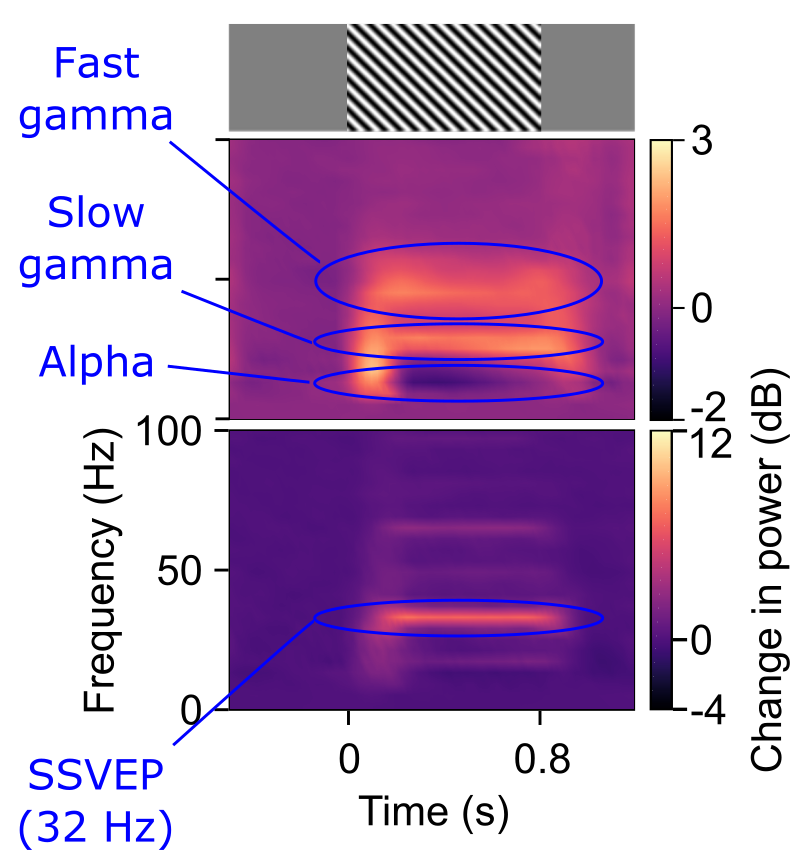Gamma oscillations in the elderly human brain weaken with age
-Priti Bangal
The activity of the human brain can be recorded as electrical signals. These include gamma oscillations which are examples of high frequency oscillations, with frequency ranging from 20-70 Hz. In areas of the brain that process vision, these rhythms are induced by specific images called gratings. Another type of rhythmic activity induced by flickering images of gratings are called Steady-State Visually Evoked Potentials or SSVEPs.
Now, researchers from the Centre for Neuroscience at IISc have shown that both visual gamma oscillations and SSVEPs weaken with age in healthy elderly humans.

Example of time-frequency change in power spectrograms, showing changes in alpha, slow gamma, fast gamma and SSVEP at 32 Hz, with respect to the power before start of the stimulus (baseline).An example stimulus (visual grating) is also shown and corresponds to the start (0 s) and stop (0.8 s) of its presence on the screen. For measuring gamma, we used stationary stimuli, and for measuring 32 Hz SSVEP, we used gratings that phase-reversed at 16 Hz. (Credit: Murty V P S Dinavahi)
During their study, the researchers presented different gratings to 227 healthy elderly participants (aged 50-88 years) on a computer screen, while they recorded brain electrical activity using electro-encephalography (EEG). EEG is a non-invasive procedure analogous to ECG and is performed using 64 electrodes spread across the scalp. They also collected data from 46 younger participants (aged 20-49 years) for comparison.
In their previous work, the authors had shown that there are two distinct gamma oscillations – fast (36-66 Hz) and slow (20-34 Hz) – in the occipital area (that processes visual stimuli), a finding that was novel to this field of research. In the current study, they have demonstrated that both these oscillations diminished with healthy aging, even though fast gamma showed a sharper decline in strength, as compared to slow gamma. Similar results were seen for SSVEPs at 32 Hz, but not in other oscillatory ranges such as alpha (8-12 Hz).

Scatter plots and regression fits for change in alpha/gamma/SSVEP power values relative to baseline across agefor elderly subjects (male: dark orange; female: light orange; both genders combined: black). (Credit: Murty V P S Dinavahi)
The authors believe that this work has implications in designing biomarkers for age-related disorders such as Alzheimer’s disease and developing brain-computer interface applications for paralyzed elderly patients.
Reference:
Murty DVPS, Manikandan K, Kumar WS, Ramesh RG, Purokayastha S, Javali M, Rao NP, Ray S (2020) Gamma oscillations weaken with age in healthy elderly in human EEG. NeuroImage 215:116826. http://www.sciencedirect.com/science/article/pii/S105381192030313X
Lab website: http://www.cns.iisc.ac.in/sray/







